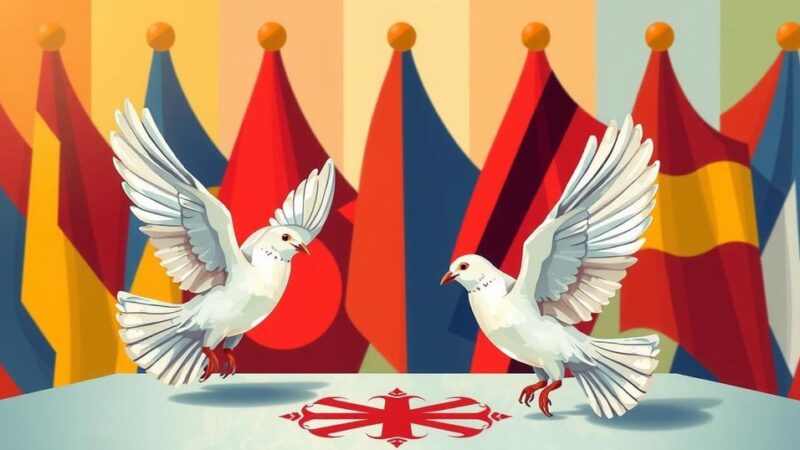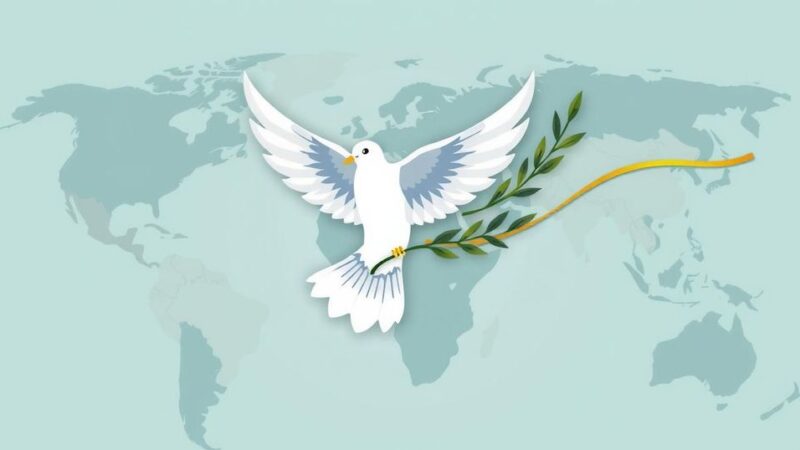The article discusses the humanitarian crisis at the Egypt-Gaza border, exacerbated by continuous Israeli bombardment and a prolonged blockade. Over two million Gazans face severe shortages of essentials like food and medical supplies, leading to widespread suffering among vulnerable populations. Photojournalist Hamada Elrasam’s accounts reveal the challenges of aid delivery and the desperate conditions faced by families in Gaza, compounded by bureaucratic delays and ongoing violence.
Egyptian photojournalist Hamada Elrasam reflects on the stark contrasts at the Egypt-Gaza border, noting that the only unrestricted movement across this boundary appears to be that of birds. This sentiment underscores the absolute divide between Egypt and the Gaza Strip, which has suffered relentless bombardment from Israeli forces for the past 16 months. Currently, over two million Gazans face relentless displacement and poverty, a situation worsened by a longstanding blockade that human rights organizations deem unlawful and detrimental to life.
As the flow of crucial supplies into Gaza halts and Israel revisits its blockade, Elrasam recalls his experiences at the Rafah crossing during a brief reopening. He identifies this tense juncture as significant, with vital aid and severely ill patients entering Gaza. Previously seized by Israeli forces in May, the crossing is crucial to any humanitarian relief efforts.
Among those evacuated was Manal Elkhaldie, a mother who sought treatment for her daughters suffering from serious health issues. She expressed her fears about losing her child, who has manageable but neglected medical conditions due to the ongoing war. Currently, Gaza is nearing a health sector collapse, with approximately 350,000 medically needy patients amidst ongoing military assaults on healthcare facilities and personnel.
The ceasefire stipulations initially promised the evacuation of 50 patients daily, but implementation has been severely challenged, termed ‘painfully slow’ by the World Health Organization. Approximately 14,000 individuals, including 5,000 children, await approval for urgent medical treatment. Tragically, many remain stuck amid chronic shortages of essential medical supplies, leading to preventable deaths.
Simultaneously, aid convoys on the Egyptian side of the border remain stalled, with only a fraction of the necessary daily food aid getting through to starving populations. Prior to recent agreements, Gazans were receiving inadequate aid, as hunger escalated significantly for the besieged population.
For Gazan father Mohamed Misbah, humanitarian assistance represents a literal lifeline for his family. Despite being granted passage across the crossing with some of his children, he expressed deep concern for those left behind in the devastated conflict zone. With a significant portion of the infrastructure destroyed, civilian organizations are calling for a halt in military armament to Israel due to their complicity in the ongoing genocide.
Conversations with Egyptian aid truck drivers reveal the obstacles they confront, including rejection of life-saving shipments on arbitrary technicalities. Delays are endemic, and many necessary supplies—especially those labeled dual-use by Israeli authorities—remain blocked from entry into Gaza. This includes critical medical supplies at a time when child amputee rates are at alarming highs due to the ongoing conflict.
Elrasam recounted a poignant moment during his travels down the border: a child waving a Palestinian flag as he recognized a bus filled with travelers. This imagery symbolizes the deep yearning and dreams of those affected by this crisis, as it captures a fleeting moment of hope amidst overwhelming adversity.
The situation at the Egypt–Gaza border highlights the severe humanitarian crisis resulting from ongoing conflict and blockades. With millions displaced and in dire need of aid, both medical and nutritional, the delays and restrictions imposed by Israeli authorities exacerbate an already tragic scenario. Evacuations and aid supplies are critically insufficient, with persistent calls for global intervention to address the humanitarian violations occurring within Gaza. Through the lens of Elrasam, we witness the complex interplay of hope and despair in a region reeling from violence and suffering.
Original Source: mondediplo.com






